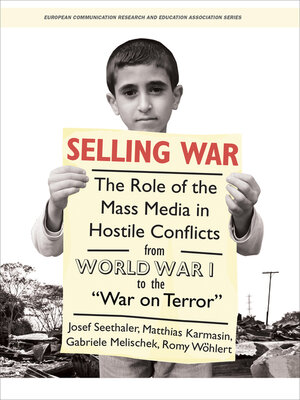Selling War
ebook ∣ The Role of the Mass Media in Hostile Conflicts from World War I to the "War on Terror"
By Josef Seethaler

Sign up to save your library
With an OverDrive account, you can save your favorite libraries for at-a-glance information about availability. Find out more about OverDrive accounts.
Find this title in Libby, the library reading app by OverDrive.



Search for a digital library with this title
Title found at these libraries:
| Library Name | Distance |
|---|---|
| Loading... |
This book is the first collection of essays to explore the changing relationships between war, media and the public from a multidisciplinary perspective and over an extended historical period. It is also the first textbook for students in this field, discussing a wide range of theoretical concepts and methodological tools for analyzing the nature of these relationships. The book starts with a thorough overview by Philip Seib of war, the media and the public sphere. His chapter explores how the perception of war in the public sphere is influenced by the media and, more precisely, how the news media define and perform their social function in relation to war. It points to the fact that it is not only the way in which journalists deliver news about war to the public that affects how people think about war. Information and its impact on the public are also influenced, to a varying extent, by the medium that conveys the message. The impact of newspaper articles differs from that of a live television report from the battlefield, which in turn differs from an amateur's YouTube video, not just in terms of production but also in terms of access and consumption. Obviously, changes in the media environment and its technologies affect the nature of news journalism, the role of professional communication and the way media messages are perceived by the public.







